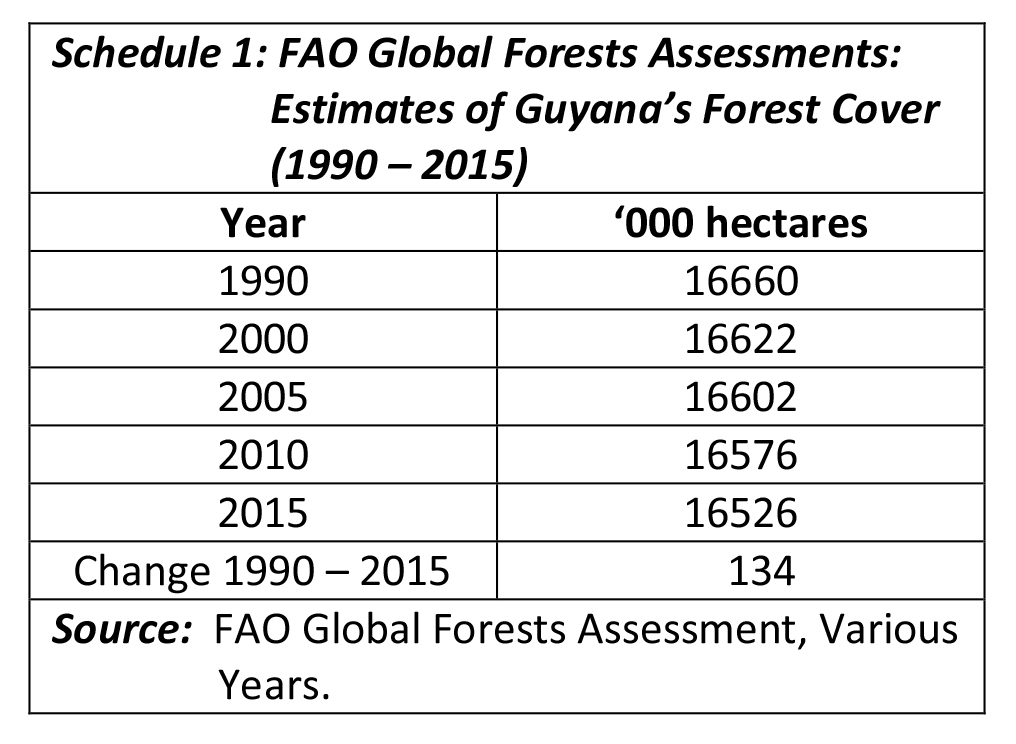The “price of carbon” proxy
Last week’s column introduced estimates of the carbon stock in Guyana’s forests. All estimates of its forest cover, as provided by the FAO’s five Global Forests Assessments held between 1990 and 2015, reveal that, for more than a quarter of a century, Guyana has justified its celebrated status as a “high forest – low deforestation” (HFLD) country. The carbon stock embedded in its forests, contributes Economic Value to the World (EVWc). And, 
Schedule 1 displays the estimates of Guyana forest cover provided by the Global Forests Assessments. Based on the work of Denis Alder and Marijke van Kuijk, I had proposed last week, readers’ acceptance of their summary conclusion: “Guyana’s high forest sequester 13 billion tonnes of carbon dioxide in living trees or 16 billion tonnes including deadwood, litter and soils.

